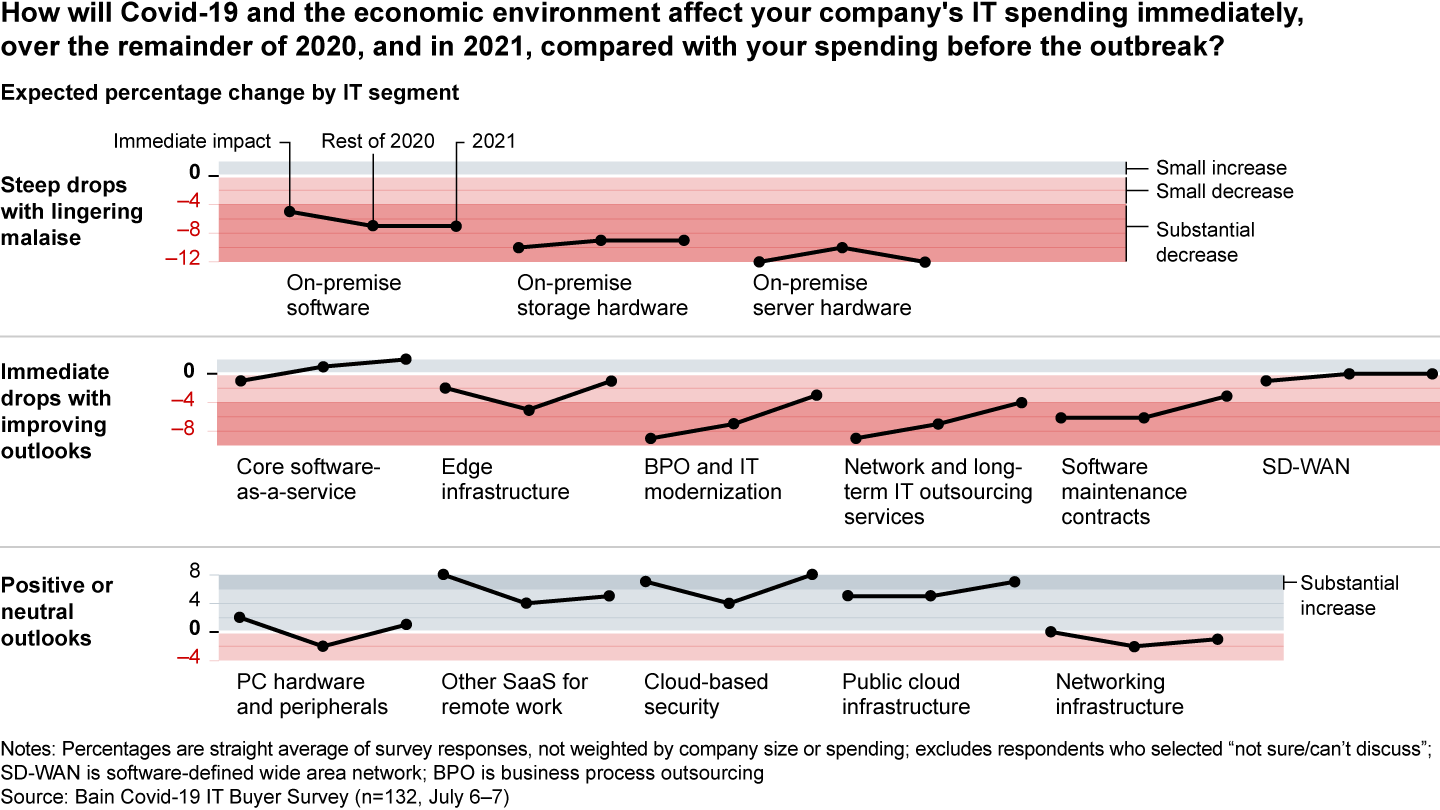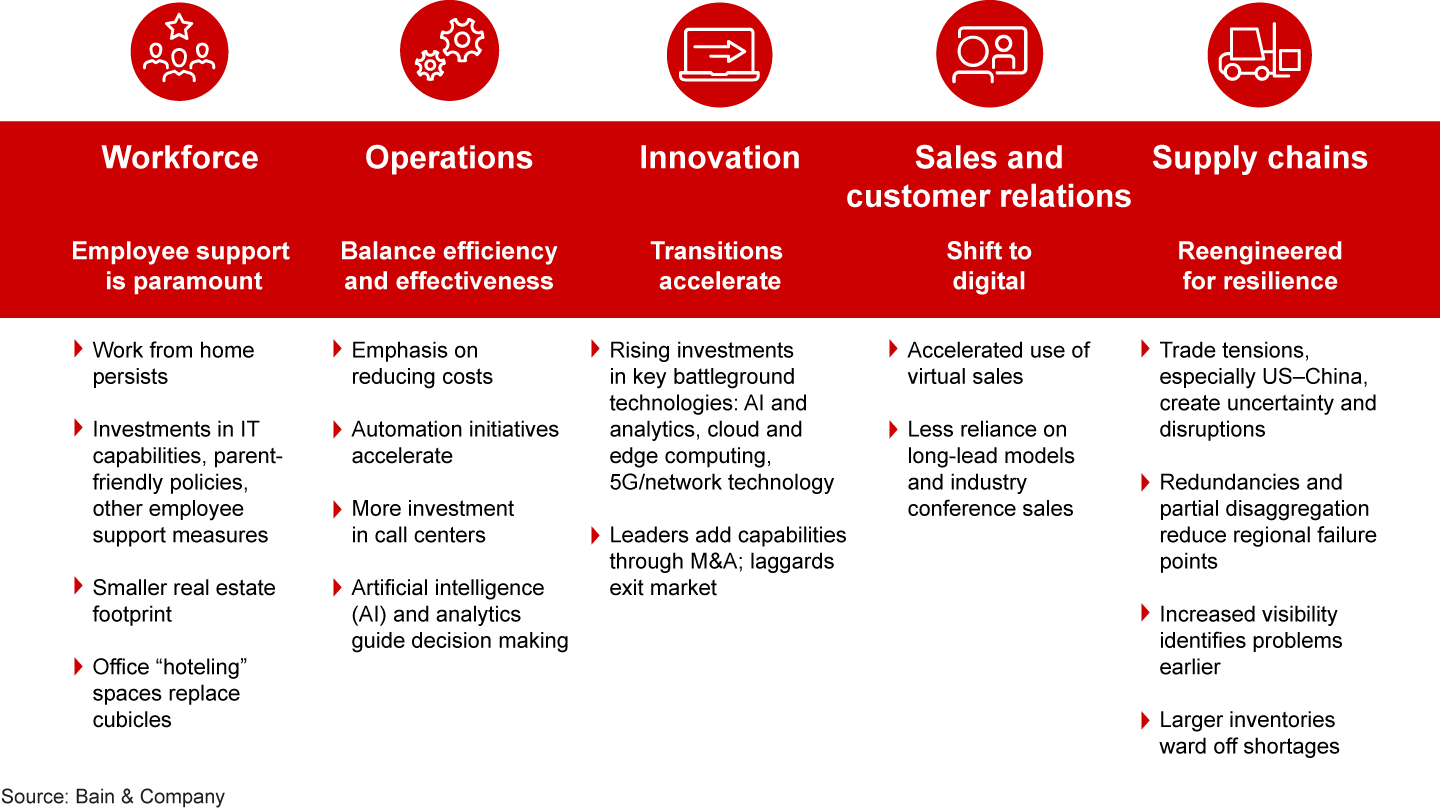Report

This article is Chapter 1 of Bain’s global Technology Report 2020. Explore the contents of the report here or download the PDF to read the full report.
It’s safe to say that at the beginning of the year, everyone expected a very different 2020. Then Covid-19 hit. The virus has devastated families, communities and the global economy. Companies in every industry took steps early in the pandemic to protect and support employees, customers and their businesses, while trying to plan for an uncertain future.
In the technology sector, the crisis laid bare overlooked and underestimated weaknesses. It also created new, unexpected growth as people around the world scrambled to replicate their lives in virtual format with the help of technology. But most technology companies haven’t drastically altered their existing plans.
One of the clearest examples: The long-term shift from on-premise to cloud computing continues to be a critical priority, according to a cross-section of IT decision makers Bain & Company has surveyed monthly since March (see Figure 1). When the crisis hit, companies paused many of their IT investments. Early in the pandemic, IT decision makers said they expected decreased spending on software maintenance contracts and on-premise IT to continue at least through 2021. The expected spending reductions have only grown more pronounced as the pandemic has unfolded.


It wasn’t all belt-tightening. IT decision makers said they immediately boosted spending on cloud-based security and software-as-a-service for remote work in the wake of the pandemic. They expect their cloud budgets to continue growing over the next year and beyond.
At the same time, the pandemic has spurred technology executives to reshape many aspects of their businesses with one critical objective: resilience (see Figure 2).


Retooling the supply chain has become an urgent priority for many leadership teams. They want to make them less brittle, not just cost-effective. Covid-19 disruptions have underscored how fragile extremely lean global technology supply chains have become after decades of shortening cycle times, stripping out costs and inventory, and concentrating production in China and a few other countries.
Technology executives are showing similar levels of commitment to automation wherever possible, but the pandemic has made automation a way of boosting resilience more than lowering costs. Companies are accelerating and programmatically scaling up their experiments with robotic process automation, artificial intelligence and other advanced automation tools.
As part of this, technology firms are rethinking their traditional reliance on selling products and services in person at industry conferences. The pandemic has mandated a dramatic shift to virtual sales, and that approach is likely to persist well after the crisis. Virtual channels can reduce costs, improve productivity and speed up sales cycles. It turns out they’re often just as effective for closing deals, if not more so.
The ways employees have adapted are also remarkable in many cases. For months, many have worked productively from home offices. They’ve kept their employers competitive despite having to navigate an isolated and often hectic home environment, with children, significant others and relatives similarly stuck under one roof. As a result, employer subsidies for remote-work tools—such as additional phone lines, faster Internet, in-home daycare and meal delivery—have quickly become a new front in the war for talent.
The implications for office space and real estate alone are staggering. Many technology companies are considering allowing significant portions of their staffs to work from home permanently; reducing their office footprint; and replacing large banks of cubicles with fewer, better-equipped hoteling spaces.
Technology has always moved fast, but the transformation across the industry has accelerated faster than some in the industry thought possible. Like past crises, this one will favor those who boldly adapt and extend new ways of operating.